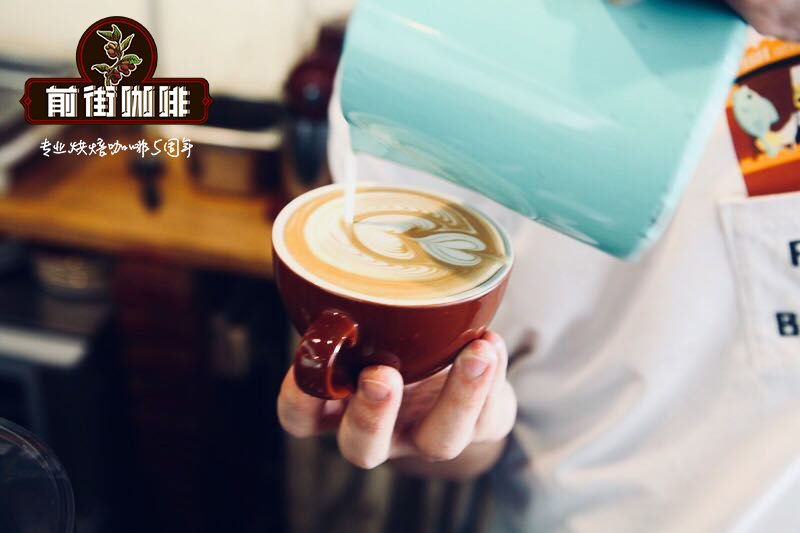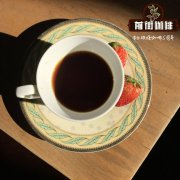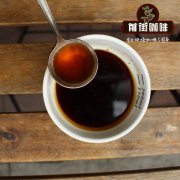Bourbon Variety-the story of coffee cultivation at the Bwayi washing plant in the MATONGO region of Burundi? Burundi

Professional coffee knowledge exchange more coffee bean information please follow the coffee workshop (Wechat official account cafe_style)
Bourbon Variety-the story of coffee cultivation at the Bwayi washing plant in the MATONGO region of Burundi? How do you drink Burundian coffee?
The Bwayi washing plant is located in the town of Matongo, Cayanza province, Burundi. An average of 4000 coffee producers contribute to Bwayi, of which 983 provide services directly to the site, of which 3018 contribute 10 different collection points. Other crops in the region include bananas, beans, sweet potato, cassava and taro. The town is located in Kayanza, Burundi. Like most washing stations in East Africa, the Bwayi station handles coffee from a variety of small coffee growers with land in the region.
In total, the Bawayi laundry station brought coffee from about 4000 coffee producers. Nearly 1/4 of these producers send their coffee harvests directly to the laundry station, and the rest discard their harvests from the station's 10 collection points.
Deep in the heart of Africa is the small country of Burundi, which is imported from cafes: since 2006, we have been hiking in a place in southern Rwanda south of Lake Tanganyika, and Cafe Imports was one of the first companies to see the great potential of specialty coffee here-not just because of their exquisite shape and complexity like Kenya, but because of their versatility as top Colombians. And there are the economic possibilities offered by specialty coffee.
Coffee in Burundi has always been a logistical challenge, even for the rest of us. This is a particularly poor country with one of the lowest gross domestic product in Africa and has brought new political struggles and unrest in recent years, dating back to the very difficult periods of the late 1990s and the beginning of the 21st century. The country's inland position on the continent is also difficult to manage: instead of selling FOB (free on board), most coffee can be bought from Rwanda, Burundi and the Democratic Republic once it arrives at the port and is packed in containers. Just traded FOT, or truck for free-this is a riskier arrangement because it requires incredibly long-distance transportation from the processing plant to ports in up to three countries and the week-long travel time being removed.
Although Burundi and Rwanda have similarities in variety, processing, farmer image and history (the two countries are often confused in product lists and "stories" of African coffee), but in fact they are almost a night and a day in the cup: the sparkling acidity and incredible complexity and diversity of Burundi are definitely the product of local customs here. The smell of this place is as beautiful and changeable as the place.
Burundi is a small country in the heart of Africa, below Rwanda, between the Democratic Republic of the Congo and Tanzania. Like many neighboring countries, Burundi was once a colony. At this time, coffee is mainly exported back to Europe, and local farmers receive little or no recognition for their work. As expected, exploitation has made Burundians disillusioned with their work.
In 1963, Burundi (along with neighbouring Rwanda) gained independence from colonial rule. Unfortunately, this newfound freedom has fuelled resentment between the two ethnic groups in the country. Like neighboring Rwanda, the conflict escalated into a full-blown war. The result is decades of unrest and hundreds of thousands of deaths. Although the country is still grappling with violence, political instability and the overall economic gap, coffee gives Burundians new hope for the future.
Burundian coffee is sweet, complex, full-bodied and tastes excellent. Like the world's famous coffee-producing neighbors Ethiopia and Kenya, Burndian farmers use processing methods that produce the best cup shape in the world. In typical Burundian coffee, it is not uncommon to taste a variety of fruit flavors against a background of thick and sweet chocolate tones. The acidity is extremely shiny and clean, creating bright and balanced properties in the cup.
The excellent flavor of Burndian coffee makes people proud of their work on individual farms. Coffee from Burundi is almost entirely classified as "micro" because individual farmers can only supervise very small coffee-growing areas. As a result, hundreds of farmers sent their coffee to cooperatives, where they will work with local laundry stations to sort and process their coffee beans. From here on, coffee will be purchased by import companies, and money will spread among farmers. Cooperatives enable small farmers to see their coffee sold, while trying to sell it themselves can lead to problems, such as coffee being sold at well below its value, or even not sold at all.
As coffee exports remain at more than 1/3 of Burundi's gross domestic product, the necessity and importance of this crop will in no way diminish. As quality continues to improve every year, Burundi continues to distinguish itself as a resource-rich and ultimately brave people, despite economic and political upheavals that continue to produce coffee that has surprised professionals around the world.
Flavor: Cherry, plum, red fruit, cocoa, litchi, jasmine, red apple, molasses, vanilla, blackcurrant
Acidity: juicy, lemon, bright
Texture: round, thick, unique, raspberry
Variety: bourbon
Treatment: washing treatment
Filter cup: Hario V60
Water temperature: 88 degrees
Degree of grinding: small Fuji degree of grinding 4
Qianjie coffee is recommended for brewing:
Cooking methods: the ratio of water to powder is 1:15, 15g powder, the first injection of 25g water, 25 s steaming, the second injection to 120g water cut off, waiting for the powder bed water to half and then water injection, slow water injection until 225g water, extraction time about 2:00
Analysis: using three-stage brewing to clarify the flavor of the front, middle and back of the coffee. Because the V60 has many ribs and the drainage speed is faster, when the water is cut off, it can prolong the extraction time and better extract the nut and chocolate flavor of the tail section.
Important Notice :
前街咖啡 FrontStreet Coffee has moved to new addredd:
FrontStreet Coffee Address: 315,Donghua East Road,GuangZhou
Tel:020 38364473
- Prev

Burundian Award for Excellence-what are the characteristics of bourbon grown coffee beans in the Burundian Rubagabaga Coffee washing Plant?
Professional coffee knowledge exchange more coffee bean information please follow the coffee workshop (Wechat official account cafe_style) Burundi Award for Excellence in Burundi Rubagabaga Coffee washing Plant Bourbon growing coffee beans? Introduction to Burundian Rubagabaga Coffee? The Rubagabaga Coffee washing Station was built in the early 1990s to collect cherries from miniature plantations in the mountains around the station. Every one of them.
- Next

What is Puerto Rican coffee? how do you make Puerto Rican coffee? Puerto Rican coffee flavor
Coffee workshop (official Wechat account cafe_style) Puerto Rico has a history of producing coffee for nearly three hundred years and was once one of the most productive regions in the world. According to the Starbucks website, Spanish explorers brought coffee from Louis XIV plantations in France to the island in 1736. Selected by Yao Konote (Yaucono Selecto
Related
- Detailed explanation of Jadeite planting Land in Panamanian Jadeite Manor introduction to the grading system of Jadeite competitive bidding, Red bid, Green bid and Rose Summer
- Story of Coffee planting in Brenka region of Costa Rica Stonehenge Manor anaerobic heavy honey treatment of flavor mouth
- What's on the barrel of Blue Mountain Coffee beans?
- Can American coffee also pull flowers? How to use hot American style to pull out a good-looking pattern?
- Can you make a cold extract with coffee beans? What is the right proportion for cold-extracted coffee formula?
- Indonesian PWN Gold Mandrine Coffee Origin Features Flavor How to Chong? Mandolin coffee is American.
- A brief introduction to the flavor characteristics of Brazilian yellow bourbon coffee beans
- What is the effect of different water quality on the flavor of cold-extracted coffee? What kind of water is best for brewing coffee?
- Why do you think of Rose Summer whenever you mention Panamanian coffee?
- Introduction to the characteristics of authentic blue mountain coffee bean producing areas? What is the CIB Coffee Authority in Jamaica?

